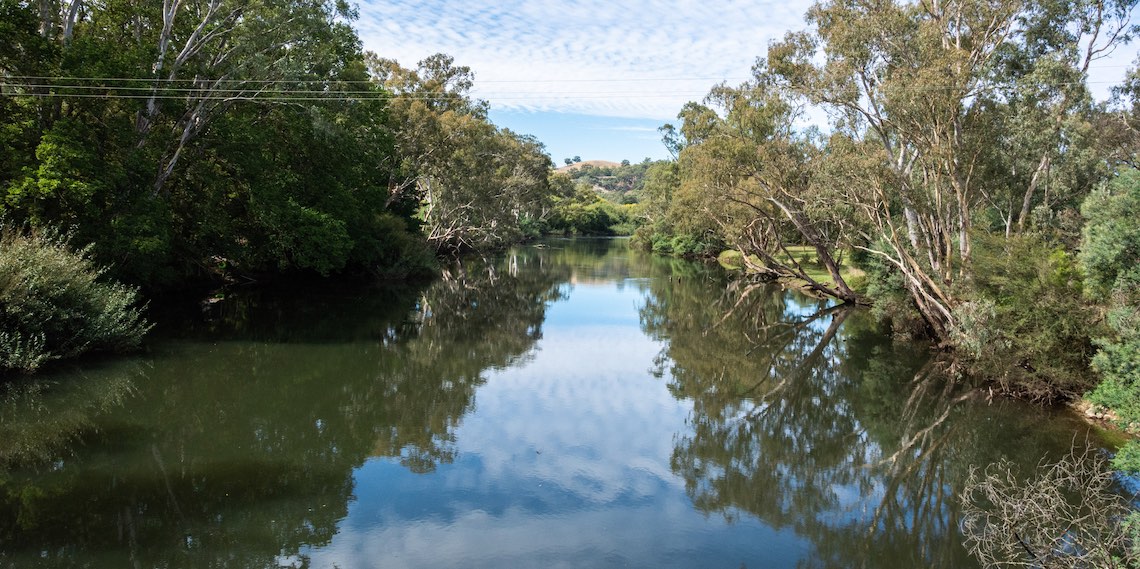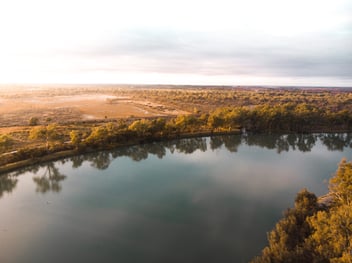New Bill introduced to help meet the Murray-Darling Basin Plan

On 6 September, the Minister for the Environment and Water, the Hon Tanya Plibersek MP, introduced the Water Amendment (Restoring Our Rivers) Bill 2023 to Parliament.
The Bill proposes changes to the Water Act 2007 and Basin Plan 2012 to support the implementation of the Basin Plan in full, including the delivery of the 450 GL of additional environmental water, and improve transparency and integrity of water markets in the Basin.
In July 2023, the Murray-Darling Basin Authority (MDBA) advised that full implementation of the Basin Plan would not be possible by 30 June 2024 as currently required.
In August 2023, an agreement was made between the Australian, New South Wales, South Australia, Queensland and Australian Capital Territory governments to deliver the plan in full, including recovering 450GL of additional water for the environment.
Changes proposed in the Bill include extending timeframes for delivery of key programs. The Bill provides greater flexibility to recover water to meet the 450 GL target.
The Department of Climate Change, Energy, the Environment and Water (the department) hosted a public webinar on 11 October providing information about the Bill, including representatives from the department, the Murray-Darling Basin Authority, the Bureau of Meteorology, the Australian Competition and Consumer Commission and the Inspector-General of Water Compliance.
The department’s Water Reform Division Head, Rachel Connell, said the Bill creates new pathways to deliver the Basin Plan in full and achieve the 450 GL target.
“In July 2023, in response to the request of the Minister, the MDBA provided advice that implementing the Basin Plan in full by 30 June 2024 would not be possible,” she said.
“A range of reports, including the two independent reviews of the Water for the Environment Special Account (WESA), the Productivity Commission, and regular updates from the MDBA, have highlighted the challenges in meeting current deadlines under current settings.
“As a consequence of that, Basin states and the Australian Government have been working over the last year to develop a feasible framework to be able to deliver on the Basin Plan in full.”
"To be able to deliver on the agreement between the Australian Government and Basin states in August, changes to the Water Act and the Basin Plan are required," Connell said.
“At a high level, the agreement sets out significant changes to ensure that the Basin Plan can be delivered in full, which requires more time and more options. The current program settings are quite constraining,” she said.
“More funding is going to be required, too. And we have heard consistently from community stakeholders across the Basin that they want greater accountability and transparency in delivering the Basin Plan. The Bill includes a range of measures to improve accountability.”
What’s in the Bill?
"One of the key changes in the Bill is to amend both the Water Act and the Basin Plan to provide more time for sustainable diversion limit adjustment mechanism (SDLAM) projects," the department’s Policy Reform Branch Head, Emma Solomon, said.
“The Bill proposes more flexibility for states to bring forward new supply projects. It also proposes more options for delivering the 450 GL of additional water for the environment including through voluntary water purchase,” she said.
“The Bill also enables funds from the WESA account to be used more flexibly to deliver the 450 GL of additional environmental water. It moves the Water Act review from 2024 to 2027.
“This will ensure the Water Act review can take into account the research, findings and recommendations of the Basin Plan review which is due in 2026.”
Solomon said SDLAM projects deliver environmental outcomes equivalent to water recovery, reducing the volume of water that needs to be taken out of the consumptive pool to meet sustainable diversion limits.
“They’re a really critical part of the Basin Plan. Currently, the Basin Plan requires SDLAM projects to be completed by June 2024. The MDBA has advised that many of those projects won't be able to be delivered by that date,” she said.
“States have advised that some of these projects could be delivered by 2026. The Bill extends the timeframe for the delivery of these projects to December 2026.
“The Government’s approach to achieving the 450GL target will be informed by an overall assessment of value for money, minimising socio-economic impact on communities, environmental utility and also water market price.”
Solomon said the 450 GL program is going to be extended under 2027 and include new categories of projects, in addition to efficiency measures.
“It’s important to note that no changes to efficiency measures are proposed. They will remain the same and will still be subject to the socio-economic neutrality test that's in the Basin Plan,” she said.
“The new categories will not be subject to socio-economic neutrality test. However, the Australian Government is still committed to minimising socio-economic impacts on communities and has advised that it will provide transitional assistance funding to communities affected by voluntary water purchases.”
Solomon said changes to the WESA will enable funding of existing projects beyond 2024.
“The Bill expands the funding criteria to enable broader projects to be funded from the WESA to meet the target. There is currently $1.3 billion in the WESA account, and more flexibility and more time is required so that it can be used to fund water recovery after 30 June 2024,” she said.
“Importantly, there will be a third independent WESA review, which needs to be provided to the minister by 30 September 2025.”
The Bill also proposes important water market reforms in the Basin.
Solomon said the Bill addresses regulatory gaps recommended by the ACCC inquiry and the Water market reform: final roadmap report.
“The reforms will ensure water market participants have the same protections that exist in other markets and greater data transparency so that people can make informed water trading decisions,” she said.
“There's a lot of work to be done, but we're really committed to working with stakeholders to make sure that the reforms are as cost-effective and fit for purpose as possible.”
Next steps
The Bill has passed the House of Representatives, which agreed to a range of amendments. It is now before the Senate and is being considered by a Senate committee which will provide its report by 8 November 2023.
Connell said the department is engaging with states and stakeholders about potential implementation.
“What is set out in the Bill are proposed reforms. But we are keen to start the conversation with communities, industry and stakeholders about possible implementation pathways,” she said.
“One of the key things to keep in mind is that the proposed reforms set out in the Bill create an enabling framework to be able to deliver on the 450GL of additional environmental water in a much more flexible way.”


